Instruction
Can a golfer control the club face after impact?
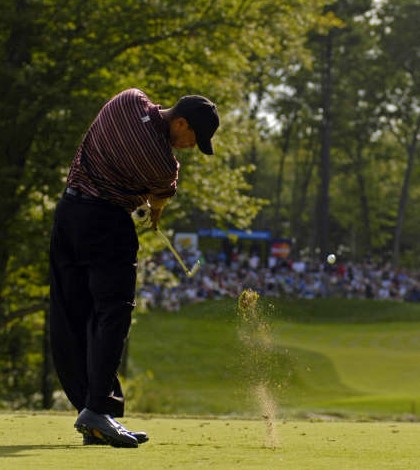
Most networks that cover major golf tournaments have a high-speed camera that shows slow-motion replays of golfer’s swings — mainly impact — during the broadcast. It shows the clubface opening and closing after impact. At the Tour Championship at East Lake Golf Club last weekend, Johnny Miller insisted on NBC that the player is responsible for the closing and opening of the clubface through impact. This is simply not right.
The opening and closing is caused by the impact point on the face. A hit near the the toe opens the face and a hit near the heel closes it. I’m not sure why or how they feel the player is responsible. This just cant be done. The “no twist” point on the face has to be struck for the face to uh, not twist. One way or the other. It matters not how strong the player is, you cannot hold the face square if there is an off center contact. Science tells us so.
This is a good lesson for everybody. When the ball is hit near the toe (for a right-handed golfer) the face opens but horizontal gear effect spins it back to the left. A lot of right to left hooks are hit this way. When the ball is hit near the heel the face closes but gear effect spins it right. A lot of left to right slices are hit this way. It is very difficult to draw it off the heel or fade it off the toe. If you remember my last article, I discussed the idea of “Raising your golf IQ.” This is precisely the type of information I was referring to.
We know that in order to draw the ball we need a path inside where the face is pointed at impact; and just the opposite for a fade. But here’s the catch. When the path is coming from the inside out, it is easier to hit near the heel. And when the path is ouside in it is easier to hit near the toe. Both of these impact points are the exact opposite of what we need for the that desried shot. Tough game this golf!
A great idea is to spray a little Dr. Scholl’s foot spray on your club face. You will find out quite quickly where you are striking it on the face. And you’ll find out why you may not be getting the shape of shot you want even if your face/path relationship is the desired one.
As always, feel free to send a swing video to my Facebook page and I will do my best to give you my feedback.
Click here for more discussion in the forums.
- LIKE3
- LEGIT0
- WOW1
- LOL0
- IDHT1
- FLOP0
- OB0
- SHANK0
Instruction
Clement: Laid-off or perfect fade? Across-the-line or perfect draw?

Some call the image on the left laid off, but if you are hitting a fade, this could be a perfect backswing for it! Same for across the line for a draw! Stop racking your brain with perceived mistakes and simply match backswing to shot shape!
- LIKE0
- LEGIT0
- WOW0
- LOL0
- IDHT0
- FLOP0
- OB0
- SHANK1
Instruction
The Wedge Guy: The easiest-to-learn golf basic

My golf learning began with this simple fact – if you don’t have a fundamentally sound hold on the golf club, it is practically impossible for your body to execute a fundamentally sound golf swing. I’m still a big believer that the golf swing is much easier to execute if you begin with the proper hold on the club.
As you might imagine, I come into contact with hundreds of golfers of all skill levels. And it is very rare to see a good player with a bad hold on the golf club. There are some exceptions, for sure, but they are very few and very far between, and they typically have beat so many balls with their poor grip that they’ve found a way to work around it.
The reality of biophysics is that the body moves only in certain ways – and the particulars of the way you hold the golf club can totally prevent a sound swing motion that allows the club to release properly through the impact zone. The wonderful thing is that anyone can learn how to put a fundamentally sound hold on the golf club, and you can practice it anywhere your hands are not otherwise engaged, like watching TV or just sitting and relaxing.
Whether you prefer an overlap, interlock or full-finger (not baseball!) grip on the club, the same fundamentals apply. Here are the major grip faults I see most often, in the order of the frequency:
Mis-aligned hands
By this I mean that the palms of the two hands are not parallel to each other. Too many golfers have a weak left hand and strong right, or vice versa. The easiest way to learn how to hold the club with your palms aligned properly is to grip a plain wooden ruler or yardstick. It forces the hands to align properly and shows you how that feels. If you grip and re-grip a yardstick several times, then grip a club, you’ll see that the learning curve is almost immediate.
The position of the grip in the upper/left hand
I also observe many golfers who have the butt of the grip too far into the heel pad of the upper hand (the left hand for right-handed players). It’s amazing how much easier it is to release the club through the ball if even 1/4-1/2″ of the butt is beyond the left heel pad. Try this yourself to see what I mean. Swing the club freely with just your left hand and notice the difference in its release from when you hold it at the end of the grip, versus gripping down even a half inch.
To help you really understand how this works, go to the range and hit shots with your five-iron gripped down a full inch to make the club the same length as your seven-iron. You will probably see an amazing shot shape difference, and likely not see as much distance loss as you would expect.
Too much lower (right) hand on the club
It seems like almost all golfers of 8-10 handicap or higher have the club too far into the palm of the lower hand, because that feels “good” if you are trying to control the path of the clubhead to the ball. But the golf swing is not an effort to hit at the ball – it is a swing of the club. The proper hold on the club has the grip underneath the pad at the base of the fingers. This will likely feel “weak” to you — like you cannot control the club like that. EXACTLY. You should not be trying to control the club with your lower/master hand.
Gripping too tightly
Nearly all golfers hold the club too tightly, which tenses up the forearms and prevents a proper release of the club through impact. In order for the club to move back and through properly, you must feel that the club is controlled by the last three fingers of the upper hand, and the middle two fingers of the lower hand. If you engage your thumbs and forefingers in “holding” the club, the result will almost always be a grip that is too tight. Try this for yourself. Hold the club in your upper hand only, and squeeze firmly with just the last three fingers, with the forefinger and thumb off the club entirely. You have good control, but your forearms are not tense. Then begin to squeeze down with your thumb and forefinger and observe the tensing of the entire forearm. This is the way we are made, so the key to preventing tenseness in the arms is to hold the club very lightly with the “pinchers” — the thumbs and forefingers.
So, those are what I believe are the four fundamentals of a good grip. Anyone can learn them in their home or office very quickly. There is no easier way to improve your ball striking consistency and add distance than giving more attention to the way you hold the golf club.
More from the Wedge Guy
- The Wedge Guy: Golf mastery begins with your wedge game
- The Wedge Guy: Why golf is 20 times harder than brain surgery
- The Wedge Guy: Musings on the golf ball rollback
- LIKE88
- LEGIT14
- WOW6
- LOL1
- IDHT0
- FLOP4
- OB1
- SHANK8
Instruction
Clement: Stop ripping off your swing with this drill!

Not the dreaded headcover under the armpit drill! As if your body is defective and can’t function by itself! Have you seen how incredible the human machine is with all the incredible feats of agility all kinds of athletes are accomplishing? You think your body is so defective (the good Lord is laughing his head off at you) that it needs a headcover tucked under the armpit so you can swing like T-Rex?
- LIKE0
- LEGIT3
- WOW2
- LOL0
- IDHT0
- FLOP0
- OB0
- SHANK2
-

 19th Hole1 week ago
19th Hole1 week agoJustin Thomas on the equipment choice of Scottie Scheffler that he thinks is ‘weird’
-

 19th Hole1 week ago
19th Hole1 week ago‘Absolutely crazy’ – Major champ lays into Patrick Cantlay over his decision on final hole of RBC Heritage
-

 19th Hole3 weeks ago
19th Hole3 weeks agoTwo star names reportedly blanked Jon Rahm all week at the Masters
-

 19th Hole2 weeks ago
19th Hole2 weeks agoReport: LIV Golf identifies latest star name they hope to sign to breakaway tour
-

 19th Hole2 weeks ago
19th Hole2 weeks agoNeal Shipley presser ends in awkward fashion after reporter claims Tiger handed him note on 8th fairway
-

 19th Hole2 weeks ago
19th Hole2 weeks agoBrandel Chamblee has ‘no doubt’ who started the McIlroy/LIV rumor and why
-
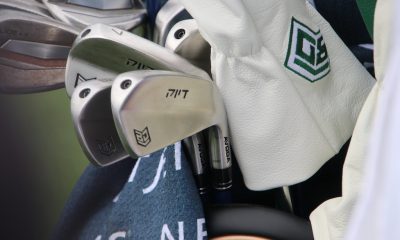
 Equipment3 weeks ago
Equipment3 weeks agoWhat we know about Bryson DeChambeau’s 3D-printed Avoda irons
-

 19th Hole6 days ago
19th Hole6 days agoLET pro gives detailed financial breakdown of first week on tour…and the net result may shock you










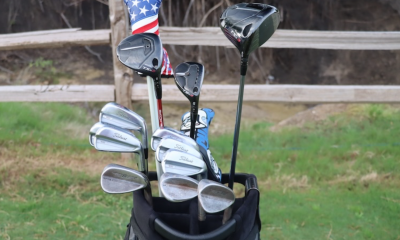

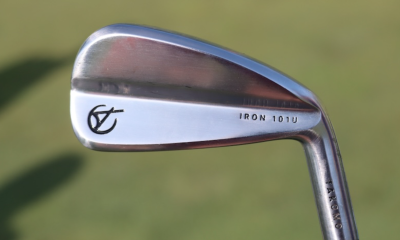

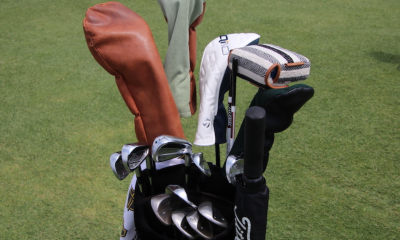

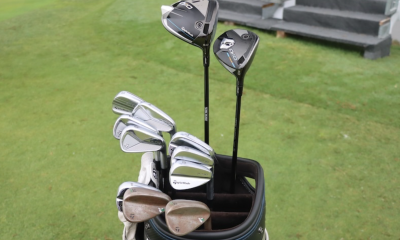

jesse
Dec 20, 2012 at 12:31 am
Gees Guys! Lets see if we can figure this out, without too much grief. Lighten up.
The ball is on the clubhead a very short period of time. It is all about “angles” The angle that the shaft brings the clubhead into the ball is key. However, if the clubhead is at the wrong angle to your target line (assuming the shaft angle is correct) the ball trajectory and sping dictates the direction. Simple as that sounds, anyone can figure it out with a ping pong paddle.
tlmck
Oct 8, 2012 at 6:34 pm
I can hit a heel hook and a toe slice just fine thank you.
Ian
Oct 4, 2012 at 12:27 pm
Have you listened to Johnny Miller?
He’s wrong about 90% of the time. Dennis and
Track man have got it right
ChuckF.
Oct 2, 2012 at 7:30 am
Jacob, Pebo, and S Safran,
Read the article first, then try to give your opinion. The article is clearly about off center hits and all youre wanting to do it try to prove Dennis wrong. You weren’t asked to write an article, Dennis was.
Pebo
Oct 1, 2012 at 12:09 pm
1/10,000 or a second.
dennis
Sep 30, 2012 at 4:50 pm
We are not assuming center contact; read the article. Upon centerdness of impact what you are trying to do CAN be done. The article states that upon NON CENTER impact what the player is trying to do is interrupted by the collision. It’s simple really.
SSafran
Sep 30, 2012 at 1:30 am
Assuming center contact some players close the face much earlier after impact (like VJ Singh and Luke Donald) while others hold the club parallel to the target line longer (like Jim Furyk) and Hunter Mayhan).
The guys who release right after impact must have more precise timing to be successful compared to guys who hold it square to the target line longer. I’ll take Johnny Miller all day long over Dennis Clark when it comes to understanding the golf swing.
Sell the Trackmans. They’re confusing you. I’d pay 10X as much to have Johnny Miller look at my swing and give me advice than to have anybody else put me on a Trackman and tell me what I’m doing.
JaxBeachNole
Sep 29, 2012 at 9:42 am
great stuff. I always feel like I am too hard on Miller, but that comment offends me as a golfer. Thanks DC.
Pebo
Sep 28, 2012 at 11:23 pm
NO. Get on a trackman and learn the science.
dennis clark
Sep 29, 2012 at 1:09 pm
I own TWO Trackmans and teach on them every day.
DCGolf
Sep 28, 2012 at 8:39 pm
The release point/type will not affect the twisting of the club on off center impact. Millers analysis claims the twisting of the club IMMEDIATELY after impact is caused by the player
Jacob
Sep 28, 2012 at 1:23 pm
Seriously? Do you not see the impact different release styles have on whether or not the face closes post impact? If the arms are driven straight and the wrists roll over, that will look a lot different immediately post impact than someone using more of a CP release.